During our last vacation, we went from the bustling Bangkok to the island resort of Koh Samui. This time around, we flew from Hawaii to spend the second half of the trip in Japan. While I like warm and scenic beaches, and love hanging out with family, what really pumps me up with vacation energy are crowded foreign cities. Hong and I visited Japan together on our honeymoon, and had been wanting to go back ever since.
From Honolulu to Tokyo Haneda, we flew Hawaiian Airlines. Even with properly adjusted expectations based on reviews, I thought it still fell short by a notch. Let’s just say that we had a more smooth experience flying economy on Bangkok Airways than we did business on Hawaiian Airlines.
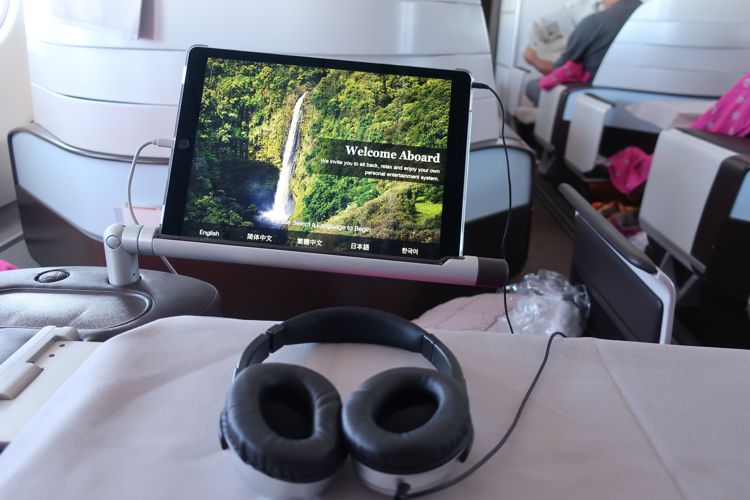
The entertainment system was loaded on an iPad
PREFACE
[WARNING] This section ponders on thoughts not quite at most trips’ happiness levels. Actual vacation report resumes below.
We love visiting Japan. However, as a couple who strives to go beyond the superficial tourism, we approach this country with rather complex feelings.
Japan’s very name, “the Land of the Rising Sun”, originated some 1,200 years ago as a taunt, in a letter from Prince Shotoku 聖徳太子 to the Chinese (Sui Dynasty) Emperor. Throughout its history, Japan more often positioned itself as opposing rather than collaborating with the rest of Asia.
Two of the most famous individuals in Japanese history are Hideyoshi Toyotomi 豊臣秀吉 and Emperor Meiji 明治天皇. The former is credited for (mostly) uniting Japan after the long warring Sengoku Period. The latter is famous for modernizing the country with incredible agility. The two of them shared in common a military ambition to take over their neighboring countries. The former set out to six years of war with Korea and China, destroying much on the peninsula. The latter began nearly seven decades of imperialism throughout Asia, which ended with World War II. Massive murder, rape, torture, and slave labor took place from Manchuria to Burma. From his time to his grandson’s, the Imperial Japanese Military committed Hitler-grade war crimes.
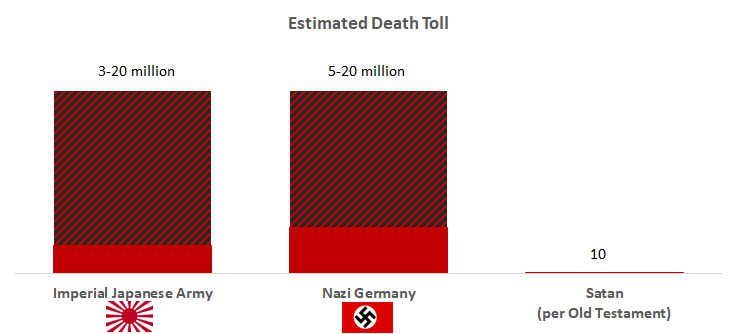
Two of the above were clearly worse than the third
For as long as I can remember, I’ve struggled to reconcile my interest in Japanese pop culture with the terrors that my family and their friends associate Japan with. The plain and simple question is, is Japan a different group of people now than those from the last century? Although the war ended 70 years ago, the country has done little to show the world that it has any remorse for what happened. The same family that commanded the Imperial Japanese Army back then continues today as emperors of the country. Top political leaders regularly pay respect at Yasukuni Shrine 靖國神社, where the worst criminals from WWII are enshrined. Imagine a Germany today where descendants of Adolph Hitler and top Nazi officers continue to occupy important government positions – we’d all be wary thinking about it, wouldn’t we?
Even when we consciously work to set aside memories of the past, random reminders jumped in our faces. On our first morning in Tokyo, we walked by a temple that had a very nice memorial – for the Japanese people who, after the war, voluntarily chose to remain in Taiwan. A plaque next to the memorial explained that many in Japan were concerned about how those who stayed behind had no descendants to tend to their graves. Their ashes were relocated back to Japan with Taiwan’s assistance, and the monument was erected, so their soul could rest in peace.
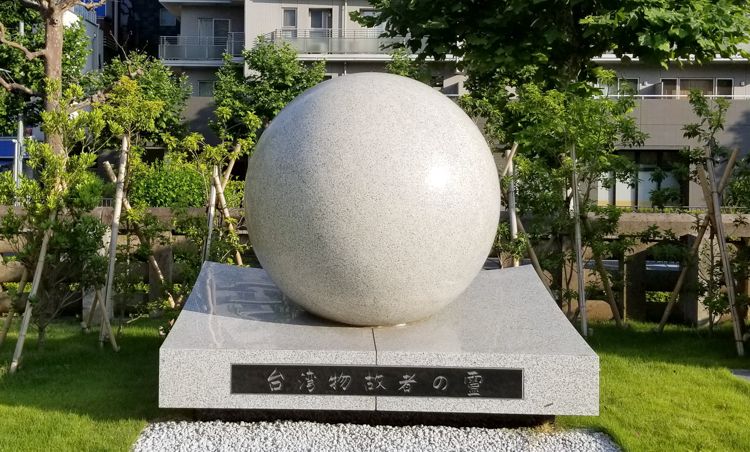
“Mausoleum for the Ashes of Japanese Deceased in Taiwan”
For context, Japan’s 50-year colonization of Taiwan ended with WWII. The Chinese government then (ROC) agreed to allow the Japanese people to remain on the island, if they wished to, and live out the rest of their lives in peace. The individuals that this memorial is dedicated to are like the American plantation owners who went into financial ruin because their slaves were freed after the Civil War… yes, their story deserves to be told. If that’s all you focus on, however, you’re missing the far more important big picture. Japan doesn’t care about that big picture, apparent in their infamous whitewashing of history in textbooks. They also don’t care about memorializing the real victims of war (e.g. people that they hurt), as their governments persistently protested tributes and statues around the world dedicated to comfort women.
This memorial immediately reminded me of Graves of the Fireflies, a famous Studio Ghibli film and one of the most highly acclaimed animated movie of all times. It tells the story of two children starving to death at the end of WWII, after their dad went to war and mom died in the firebombing of Kobe.
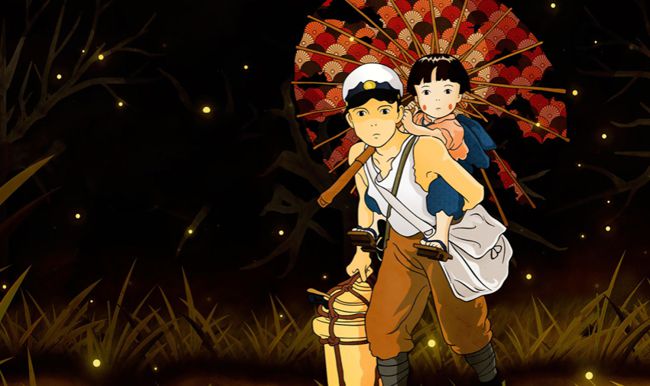
Graves of the Fireflies
The movie is well made and the story is a tear-jerker. However, I struggle with the fact that it draws international sympathy to the suffering exclusive of people closest to the perpetrators of the times. Don’t get me wrong – the children were innocent and didn’t deserve their fate. However, the big picture is again omitted. The firebombing was a direct response to Japan’s relentless attacks on half of the world. Additionally, the children’s military dad had very likely been leading charge in the slaughtering of women and children, for years, while being away from the family. The storytelling could have expanded just a bit to broadly describe the horrors of war, but instead it tunnel-visioned on the nationalist perspective portraying perpetrators as victims. It wasn’t just an unfortunate lost of opportunity to present facts, but also a disturbing reflection on how insignificant even the non-military Japanese people thought of the non-Japanese lives lost.
For the duration of the trip, I made a conscious decision to suppress these thoughts and focus on observing the culture and enjoying the renowned hospitality. In the back of my mind, though, I knew I couldn’t take the country’s outward politeness at face value.
TOKYO
[SWITCHING BACK TO VACATION MOOD] Hmm. Alright.
We landed at night in Tokyo Haneda. The arrivals hallway seemed to be miles long. After the immigration check point, the monorail and the JR circle line (Yamanote) took us to Shimbashi 新橋, where we checked into Conrad Tokyo. Thanks to a promotion last year by the Amex Hilton Surpass card, we paid a $75 annual fee and got to try out this fancy hotel, where one night costs more than a PlayStation 4.
The hotel location wasn’t the best – it was a good hike away from the train station, in a business neighborhood that was quite dark and quiet on a Saturday night. Also awkwardly unique for a top-tier hotel, staff was largely absent from both outside and inside its two entrances. No one was there to greet us, open the door, or explain the whereabouts of the lobby.
Once inside, of course, it was a very sweet place to spend the night…
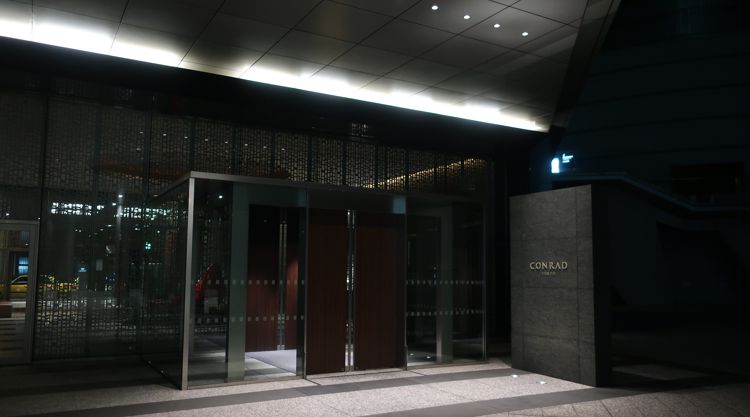
Conrad Tokyo back entrance
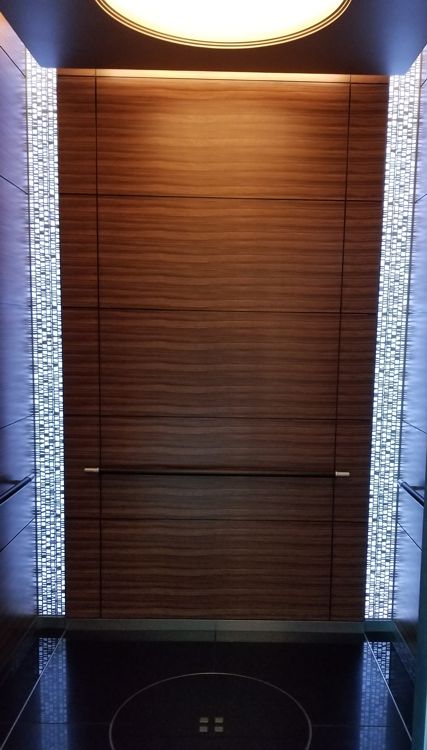
One of my favorite hotel elevators in memory

Room with view of Tokyo Bay
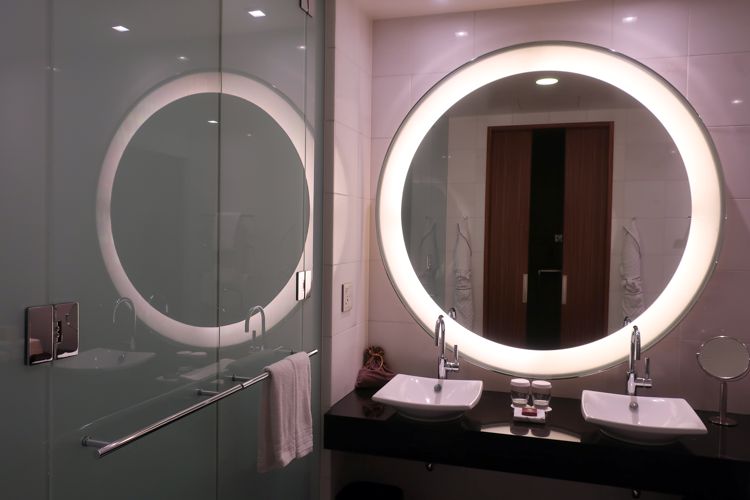
This mirror was my second favorite thing about the hotel
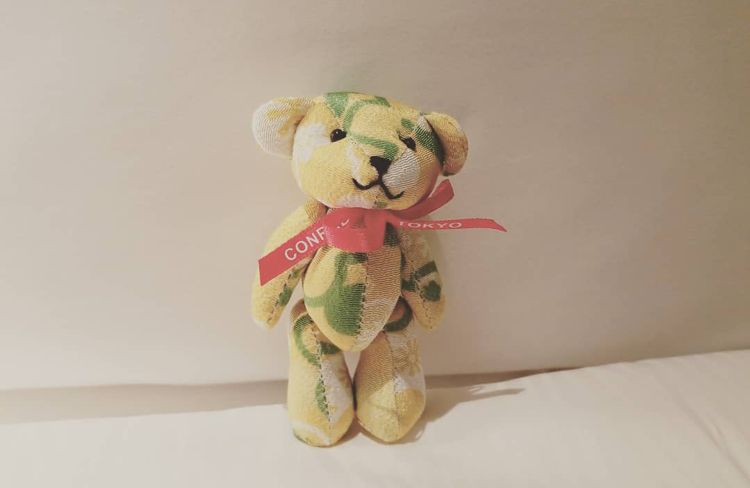
The famous Conrad stuffed animal
For dinner, we walked around the busy neighborhood adjacent to the train station. It was a busy commercial district with plenty of restaurants and stores. There were quite a few establishments featuring images of cute girls, some of which emphasized “real college students!” at the entrance. In a couple of street corners were hotels advertising hourly stay rates.
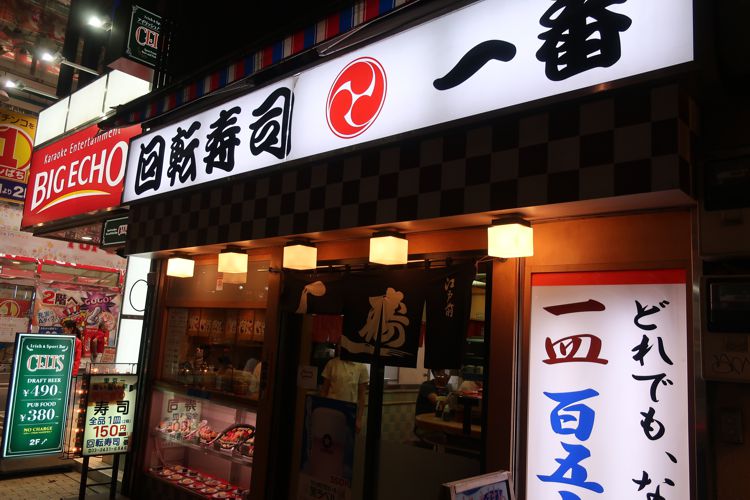
Had a few bites at this revolving sushi place
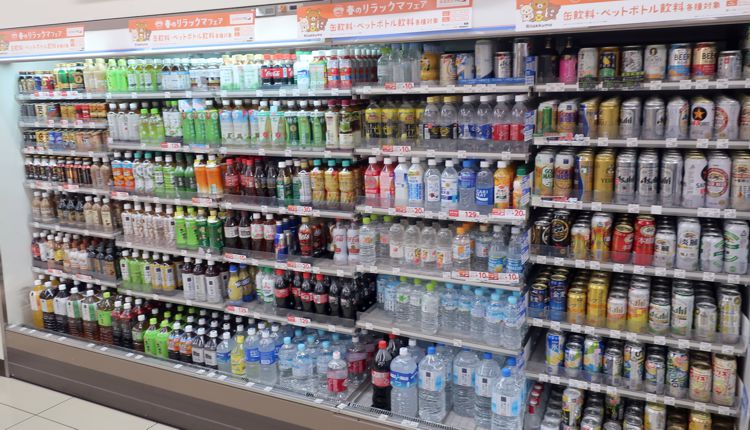
After sushi, we bought a bunch of snacks to complete dinner at the hotel
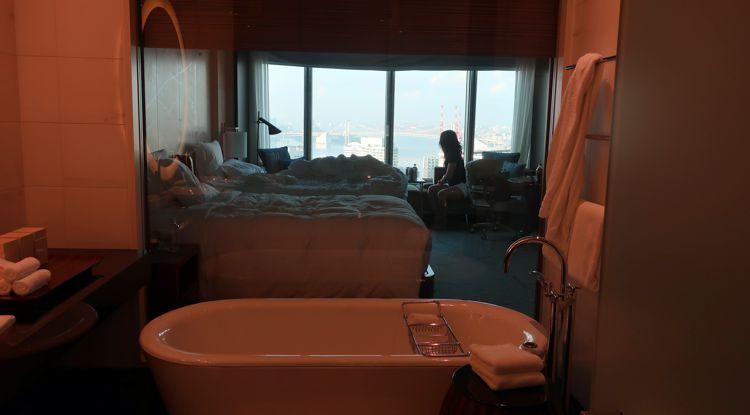
Good morning at the hotel
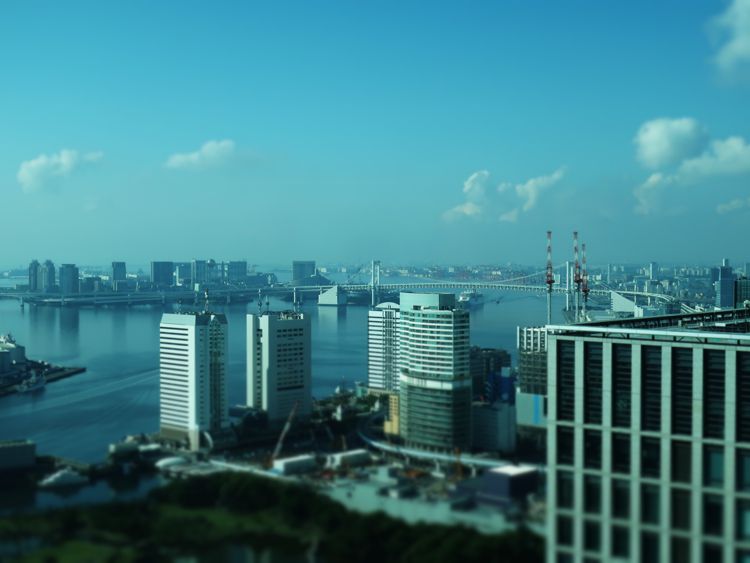
View from our room, with the white-colored Rainbow Bridge in the background

Hamarikyu Gardens

Oh it wasn’t just a free night at Conrad Tokyo. We also had Hilton Gold and therefore enjoyed a breakfast buffet on the house
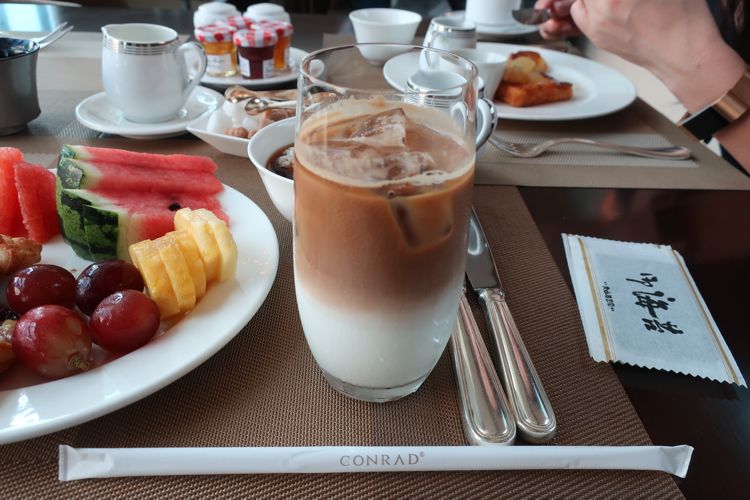
Not as elaborate as some other Asian hotel buffets, but definitely exquisite
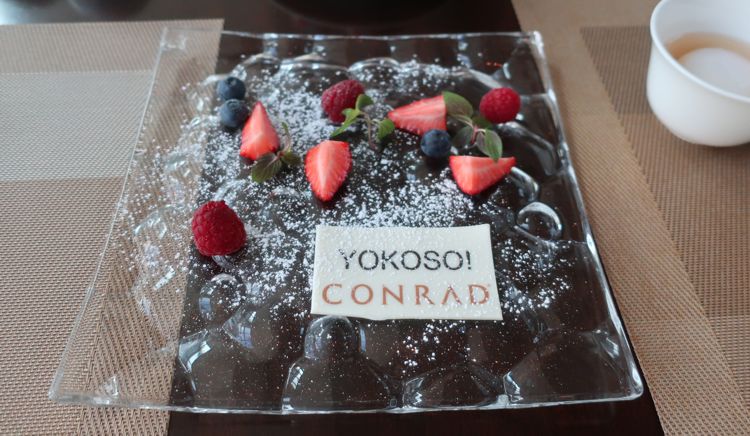
A welcome plate
Conrad Tokyo was a short walk away from Tsukiji Market. We had checked it out already during our last trip, but it wouldn’t hurt to pay the neighborhood another visit.
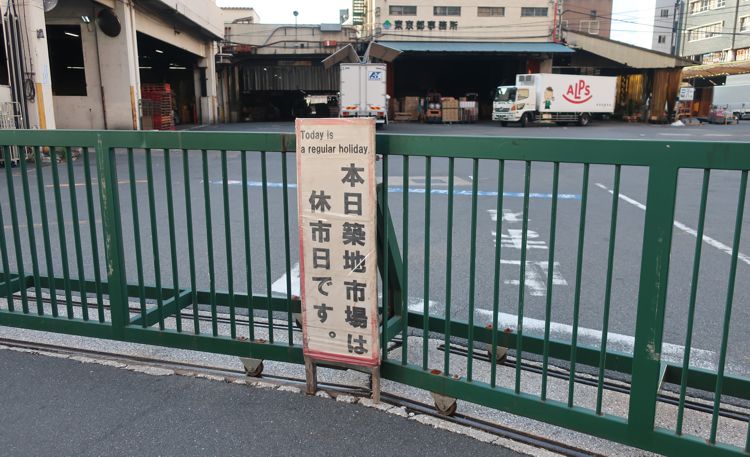
It was Sunday and the market was closed
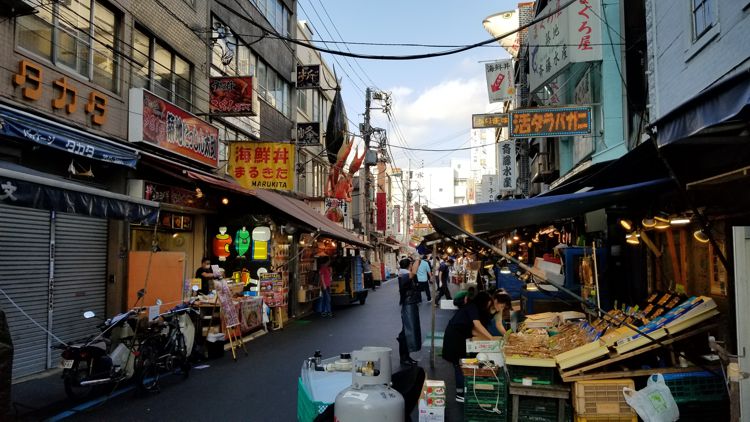
Some of the outer market vendors were still open for business

Big fish head!
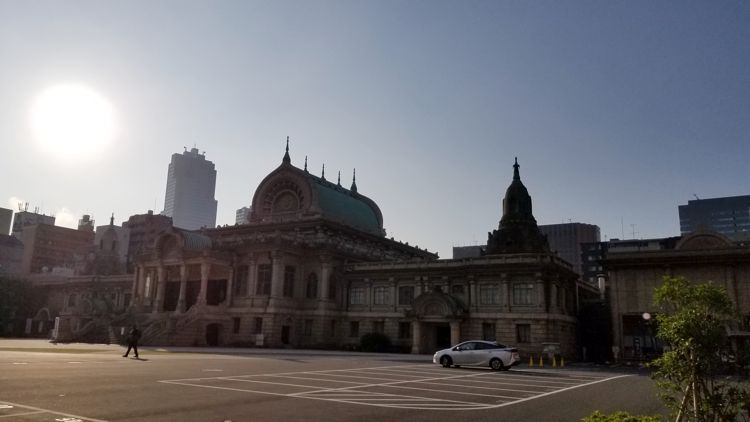
Tsukiji Hongwanji 築地本願寺, a Buddhist temple where we found the aforementioned memorial.
The architecture was nothing like any Buddhist temple we’ve seen before.
Later on that day, we found a small international supermarket at the basement of a mall. We looked around and found the butter section. Hong was pleased to see her favorite French butter, which we first tasted at a high-end restaurant in Paris. Then we saw the price tag…

$15 for a block of butter? What the heck do you do with it? Spread it on gold-plated baguette?
Then we looked to the left…
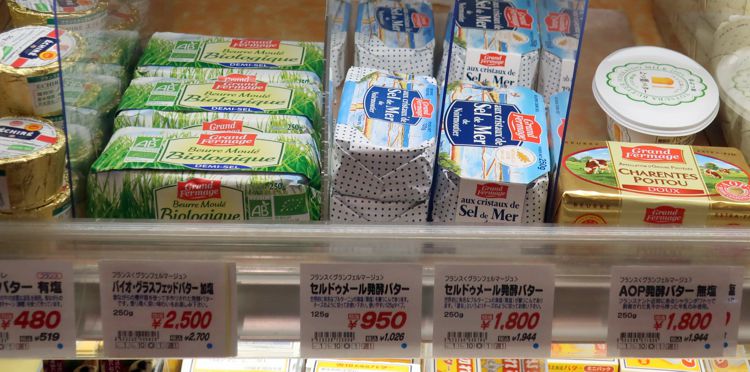
$25 block of butter…
Well I guess some people in Japan really enjoy butter!
Pacific Islands 2018 Index
- Hawaii Four-O
- Surf & Turf Adventures
- Island Eats
- On To Japan
- Osaka via Shinkansen
- Castle Day
- Deer & Whale Shark
- Osaka Urban Hangouts
- Tasty Japan
- Japan Favorites
Pacific Islands (6/10) – Castle Day – Peter's Blog
July 21, 2018 at 9:05 pm[…] On To Japan […]